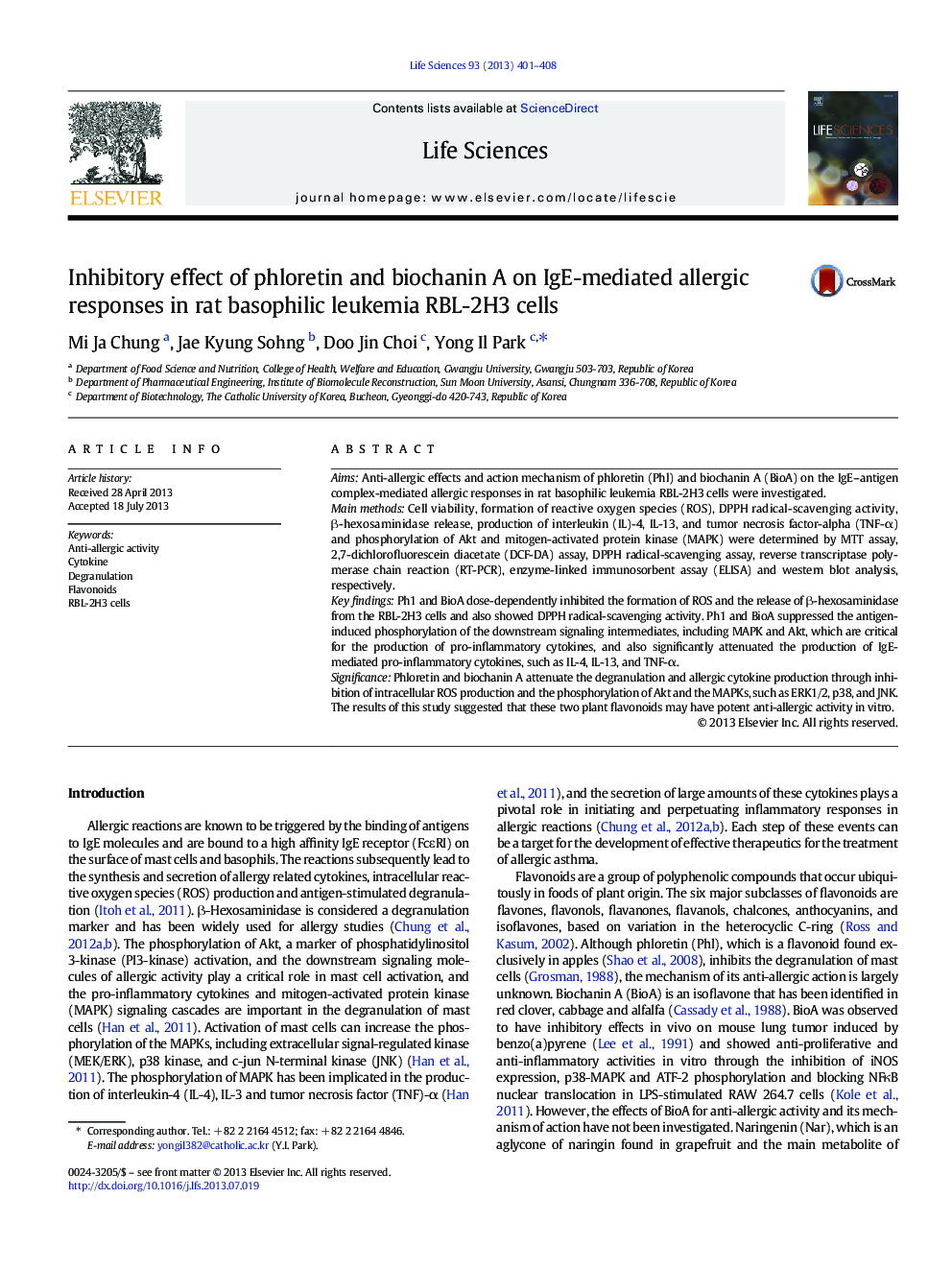| Article ID | Journal | Published Year | Pages | File Type |
|---|---|---|---|---|
| 5842333 | Life Sciences | 2013 | 8 Pages |
AimsAnti-allergic effects and action mechanism of phloretin (Phl) and biochanin A (BioA) on the IgE-antigen complex-mediated allergic responses in rat basophilic leukemia RBL-2H3 cells were investigated.Main methodsCell viability, formation of reactive oxygen species (ROS), DPPH radical-scavenging activity, β-hexosaminidase release, production of interleukin (IL)-4, IL-13, and tumor necrosis factor-alpha (TNF-α) and phosphorylation of Akt and mitogen-activated protein kinase (MAPK) were determined by MTT assay, 2,7-dichlorofluorescein diacetate (DCF-DA) assay, DPPH radical-scavenging assay, reverse transcriptase polymerase chain reaction (RT-PCR), enzyme-linked immunosorbent assay (ELISA) and western blot analysis, respectively.Key findingsPh1 and BioA dose-dependently inhibited the formation of ROS and the release of β-hexosaminidase from the RBL-2H3 cells and also showed DPPH radical-scavenging activity. Ph1 and BioA suppressed the antigen-induced phosphorylation of the downstream signaling intermediates, including MAPK and Akt, which are critical for the production of pro-inflammatory cytokines, and also significantly attenuated the production of IgE-mediated pro-inflammatory cytokines, such as IL-4, IL-13, and TNF-α.SignificancePhloretin and biochanin A attenuate the degranulation and allergic cytokine production through inhibition of intracellular ROS production and the phosphorylation of Akt and the MAPKs, such as ERK1/2, p38, and JNK. The results of this study suggested that these two plant flavonoids may have potent anti-allergic activity in vitro.
